School History Trips To Amsterdam
In Amsterdam you can trace the story of the persecution of the Jewish population and subsequent transportation to the camps through memorials, museums and personal stories. The Netherlands was occupied by the Nazis from May 1940. At this time the country had a population of approximately 140,000 Jews. Tragically 75% did not survive the Holocaust, the largest loss per population in Europe.
Highlights
Learn about life under Nazi occupation at Anne Frank's House
Trace the story of the persecution of the Jewish population
Walk in the steps of prisoners at Camp Vught Memorial
Take a cruise through the beautiful canals of Amsterdam
Cramlington Learning VillageGood service, lots of communication prior to the trip, adapted itinerary to suit the group
Suggested itinerary
What's included
Excursions and entrance fees are not included in typical price. This tour can also be organised as a coach tour from the UK.
Recommended excursions
The building where Anne Frank hid from Nazi persecution sits on the Prinsengracht canal. As well as the preservation of the hiding place and an exhibition on the life and times of Anne Frank, the museum acts as an exhibition space to highlight all forms of persecution and discrimination Photo © Konrad Glogowski.
Located in the Jewish Cultural Quarter in four historical Ashkenazi synagogues, the museum focuses on Jewish history, religion and culture in the Netherlands and its former colonies. The permanent exhibition looks at the persecution of the Jews in WWII including life stories and also explores how Jewish and Dutch cultures have influenced each other. The museum has thousands of works of art, ceremonial items and historical objects. There are changing temporary exhibitions and a Children’s Museum which educates about aspects of Jewish tradition.
The Portuguese Synagogue in the Jewish Cultural Quarter of Amsterdam has a beautifully preserved 17th century interior and is still used for religious services. The synagogues annexe buildings contain a treasury of ceremonial objects and the world’s oldest functioning Jewish library, Ets Hain, a UNESCO world heritage site. The synagogue is not always open to the public due to its function as a place of worship.
Located in a former Synagogue and Jewish Cultural Centre this small museum looks at everyday life in Amsterdam under the German Occupation from 14th May 1940 – 5th May 1945. The atmosphere of everyday life is recreated, and the exhibition considers the impact on the Dutch population. The museum looks at the persecution of the Jews during this period and the Dutch Resistance Movement. The museum considers how the Dutch people responded to the oppressive Nazi regime, who took up resistance, why and what actions were taken.
Located 100 kms from Amsterdam, this was the only concentration camp controlled by the SS outside Germany in Western Europe. The site covers an outdoor area with re-constructed watch towers and an original barrack to show how the prisoners lived. Those brought here included Jews, political prisoners, Sinti and Roma gypsies, and resistance fighters. There is a Memorial to the Jewish children who were deported in June 1943, a crematorium and an execution area in the woods. Guided tours and education packs available for schools. Photo ©: Paul Jespers
Learn about the bravery of a Christian family, the Ten Booms, who risked their lives using their home as a hiding place for those being persecuted by the Nazis during WWII. A guided tour of the house reveals how the family provided a place of refuge for Jews, members of the Dutch resistance and others. Together with other members of the so called BeJe group they are estimated to have saved the lives of 800 Jews and other refugees.
Enjoy a 360º degree view of Amsterdam and the surrounding area from the rooftop and 20th floor of the A’dam tower. A lift with sound and light effects will transport you in 20 seconds to the indoor Lookout on the 20th floor where visitors can enjoy the panoramic views and discover more about the history and culture of Amsterdam through interactive screens. Take the stairs to the roof for more views of the historic city, the port, airport and the polder landscape.
A cruise through Amsterdam’s canals is a pretty and peaceful way to see some of the city’s most beautiful spots. Gliding through the old centre, the view encompasses elegant merchants’ mansions, carillon-crowned churches and warehouses with their rich history from Holland’s Golden Age.
Tip: There are 65 miles of canals that meander through the city.
The Netherlands’ largest museum houses a fantastic collection of Dutch masters from Rembrandt to Vermeer and Frans Hals. Students can trace the developments and continuities of artistic styles and techniques. Reopened in April 2013 after major renovations, the collection also encompasses objects from Netherlands’ cultural history and Asian art.
The largest collection of Van Gogh paintings in the world is housed here, along with the works of his contemporaries, Impressionists and Post-Impressionists. A visit here helps students understand the artistic context in which his works were created and the influence they had upon others.
Tip: The permanent collection includes 200 paintings, 500 drawings and more than 700 letters.
The Clara Maria Cheese Farm and Clog Factory is located southwest of Amsterdam in the polder. A guided tour allows students to see Gouda cheese being made in the converted barn using the milk from the farm and traditional processes. Groups enjoy a cheese tasting and a chance to see Dutch wooden clogs being made using antique machinery. An on-site souvenir shop has a variety of Dutch products available
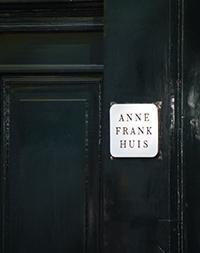
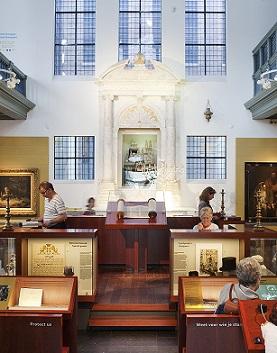
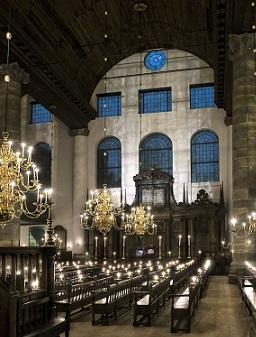
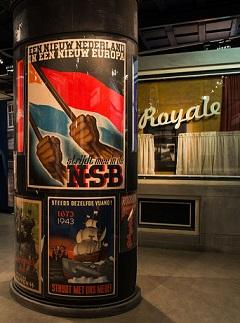
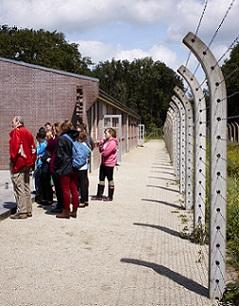
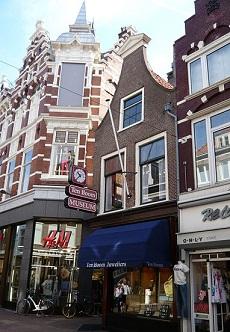
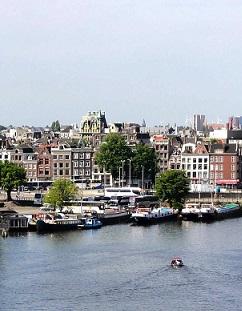
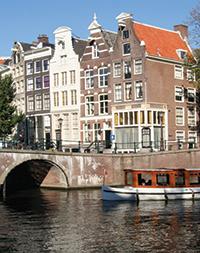
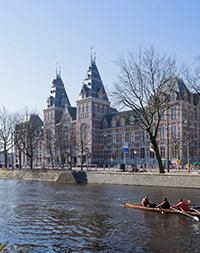
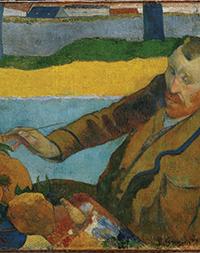
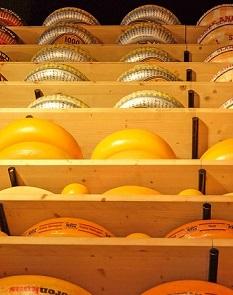
Typical accommodation
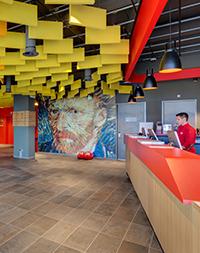
Why groups like it:
Facilities
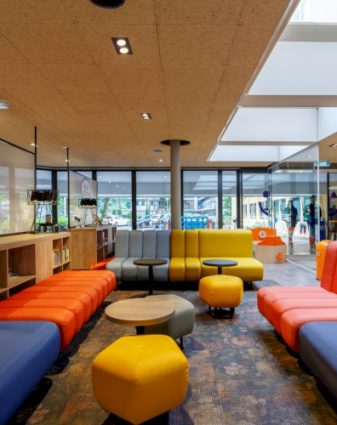
Why groups like it:
Facilities:
Learning outcomes
Subject focus
Students can:
- Visit an important location in the history of totalitarianism and the Holocaust during WWII
- Understand war-time and post-war history and reflect on atrocities committed during World War II
- Study figures from history, such as Anne Frank, synonymous with World War II and the persecution of Europe’s
Jewish communities - Learn about daily life under occupation
- Consider how the Dutch people responded to the oppressive Nazi regime, who took up resistance, why and what actions were taken.
Student outcomes
Students will have had an opportunity to:
- Ponder how repetition of the tragic events of the past can be avoided in the future
- Find out how present generations understand and come to terms with the past
- Gain a sense of the human cost of World War II
Related tours
Berlin has been at the centre of many key events in modern European History: WWII, The Cold War, the Fall of Communism and the reunification of Germany.
On a school History trip to Berlin, students can visit Berlin’s key historical sites that relate your teaching to subject-specific learning objectives such as WWII history and Cold War studies.
Your school History trip to Berlin will help your pupils develop an understanding of post-war Berlin and the context of the Cold War. They’ll get first-hand experience of the impact that the division of the city had and a deeper understanding of tensions that escalated between the East and West superpowers leading to the Cold War period.
Our excursions will touch upon historical concepts such as socialism, communism, ideology, propaganda and international conflict.
Connecting with history
With emblematic monuments such as the Berlin Wall Memorial, Checkpoint Charlie and the Tränenpalast, students can:
- analyse how heightened tensions between USSR and USA powers translated into physical boundaries
- explore how Berlin as a city encapsulates the antagonism between the communist and capitalist ideologies
- picture how this spatial division resonated within the divided German population and how this affected their lives
- give pupils perspective on concepts such as freedom of movement and fundamental liberties, and how these were challenged at the time
A personal perspective
A school History trip to Berlin will provide insights into how the German population lived during the Cold War. This will be explored interactively at the DDR Museum and Stasi Museum, with students:
- touching, holding and engaging with a range of objects and installations within the museum
- getting practical knowledge about the everyday life of the German population in the DDR and the realities of life under socialism
- understanding historical concepts such as continuity and change, similarities and differences
Take learning outside the classroom for your Key Stage 3 and 4 students and prepare them with critical analysis skills, practical case studies and real-life examples for their GCSEs.
With Travelbound, we can customise your trip to fit any learning requirements.
